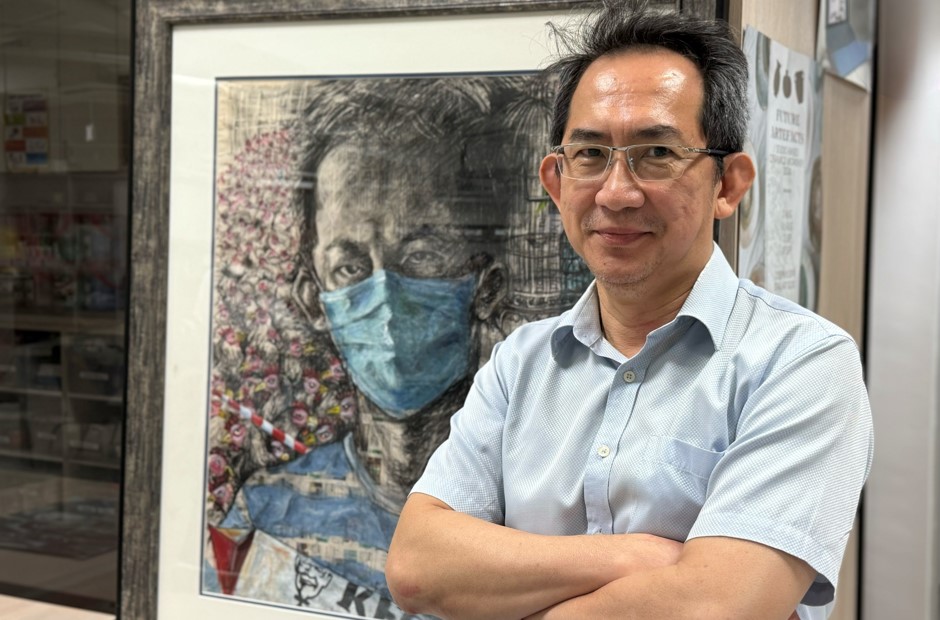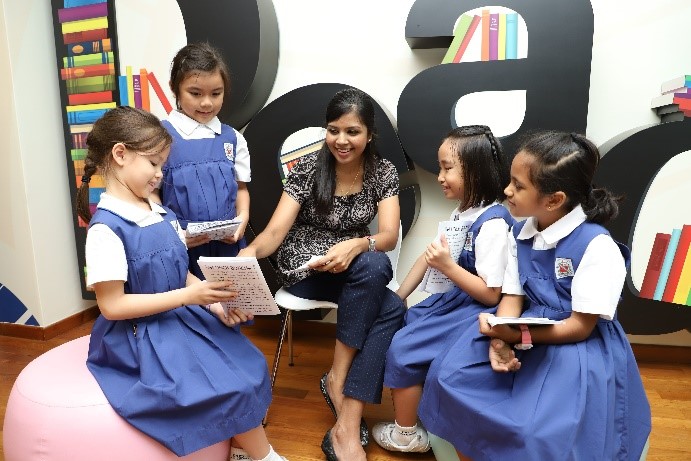Since ChatGPT and Midjourney were launched in 2022, the ways generative artificial intelligence (Gen AI) might transform the world has been one of the hottest topics across industries all over the world. But for Mr Clifford Chua, the Academy Principal of the Singapore Teachers’ Academy for the aRts (STAR), the potential of GenAI is not that unfamiliar – at least from the perspective of arts education.
“AI will affect arts education just as any other technology has,” he acknowledges. “But it’s just a tool you can play with. One of the things students learn in art class is the potentialities of different materials, and their limitations. Take clay, for example. There are things clay can and cannot do.” Similarly, AI has its affordances and constraints. “So, if we give students this tool, they will experiment with it. They will learn to exploit what it can do to create fantastic things. And what it cannot do, they will have to find other ways of doing those things.”
For that reason, AI did not drive the changes in the refreshed and revised art syllabuses that were rolled out to primary, secondary and pre-university students in 2024 and 2025. Rather, art teachers are being trained by STAR to bring out students’ voices more during their classes, by encouraging them to express and clarify their perspectives during their art-making. Experimentation and exploration are now a greater focus, and process is emphasised as being more important than final product.
The goal of these changes is to hone skills and mindsets – or more snappily, the five Cs – that will better prepare students for the volatile and complex world they will face after leaving school. Mr Chua shares what exactly these five Cs are and why arts education is uniquely equipped to impart them.
1. Creativity
Over the years, the Singapore education system has helped hone certain traits, such as efficiency and diligence. These have definitely been valuable assets to students as they enter the workforce. “But there have been some observations that Singaporeans are not so independent when it comes to solving problems,” Mr Chua points out. With an overfocus on academic results, many students also lack time to pursue interests outside of their schoolwork.
While a single-minded pursuit of good grades might once have been perceived as a virtue, it can become a liability as the world evolves. Top universities increasingly look out for applicants with distinct passions, pursuits, and perspectives. “And that’s because they have found that the people who succeed later in life have a variety of interests. The key to their success is the ability to connect the dots between different disciplines,” Mr Chua elaborates.
An arts education helps foster creative thinking through experimentation and exploration. “That whole process of developing your own way of thinking, looking and listening, then interpreting and responding, instils a more creative disposition,” he says.
2. Confidence
Another observation that is often made about Singaporeans is that “we may have very good ideas, but we don’t seem to be able to articulate them convincingly”, says Mr Chua.
By prioritising students’ voices in art lessons, teachers guide them in learning the art of communicating their ideas. For instance, conversations in class may centre on questions such as: What were some reasons for you to make this work? What was your intent? What were some of your influences, what were the challenges you encountered and how did you overcome them?
“If our students don’t see themselves as unique individuals with interesting ideas, then we are not going to get a creative society,” Mr Chua believes. “Thus, there is a need for the system to validate the individual, to say that you have your own gifts, interests, idiosyncrasies, and ways of thinking and viewing the world … and these are valid, and important.”
3. Curiosity
For parents keen to help their children brush up on the latest tech trends, Mr Chua suggests a different approach. “Teach them to have a love for learning and a healthy curiosity about things. In that way, when things change, they will find that it’s okay, and that they can just learn again.” Technology changes rapidly, and having an adaptive mindset is important in helping us better take advantage of these changes. Also, an arts education is all about developing a flexible mindset that is always open to and welcoming of change.
Mr Chua, who used to teach the Art Elective Programme, is convinced that this disposition is extremely important, no matter what careers students decide to pursue eventually. Many of his Art students went on to other non-art related careers such as finance and law, and he says with pride, “They tell me that their art lessons have set the most important foundation for their work, because no other subject required them to take their ideas from conception to development and completion.”
That whole process of researching, clarifying and refining ideas, and working with others to execute their artwork often involve struggling through failure, and coming up with many different ways to bring a concept to fruition. As leaders of their respective industries now, his former students have told him that they go through the same processes in their current work, and art education has given them an invaluable edge.
4. Comfortable with Ambiguity
Another strength the art-trained mind acquires is being comfortable with ambiguity. “You have to make something, but what that something will end up being is not determined at the start,” Mr Chua explains. “Even if you have some concept at the beginning, the work could turn out to be something quite different by the end because of all the processes and thinking that you go through. Sometimes, circumstances change, and you’ll have to adapt along the way.”
To reinforce this mindset, art teachers are trained to structure open-ended tasks in their lessons. “That creates room for students to interpret these tasks and come up with their own approaches,” says Mr Chua.
Over time, he hopes the refreshed art syllabuses will contribute to moulding Singaporean students who are more at ease with navigating uncertainties. “They won’t need everything to be spelled out for them. They won’t feel so stressed by uncertainties. And they will be able to bring Singapore through all the complexities that are out there. That is a mentality that I think we need in our world today.”
5. Cultural Capital
As an art teacher, Mr Chua remembers introducing a Secondary 1 class to Pablo Picasso’s anti-war painting Guernica. Such art appreciation wasn’t part of the general art syllabus then, but he felt it was important. Understanding the significance of important artists and artworks is part of what is sometimes called cultural capital – the accumulation of knowledge, behaviours, and skills that demonstrate one’s cultural competence.
Cultural capital is often described as a social asset, in that it can communicate social status. But there are many dimensions to the way art can build understanding. For instance, as his Sec 1 class discussed the Spanish civil war conflict that had inspired Guernica, a student asked Mr Chua, “Do you think something like this can happen in Singapore?”
Mr Chua saw this as a teachable moment and threw out his lesson plan. And the lesson turned into a conversation about Singapore’s racial and religious harmony. “Art and music, if taught well, can sensitise students to so many things,” he explains. “Because there is a creative product, an artefact or a melody that we can respond to, students can talk about different issues in a very organic, non-threatening way.”
These days, exposure to Singapore artists, musicians and their works is an integral part of local arts education, which includes visits to our local museums, galleries and concert halls. That, in turn, helps build understanding and pride in homegrown culture, and instil a strong sense of cultural identity.
“Throughout history, the arts has always been part and parcel of culture-building,” says Mr Chua. “We can be proud of our architecture, our paintings, our sculptures, our songs. Knowing why they were made, and how they demonstrate the values that we all espouse as a people – that’s a very important aspect of arts education that we also bring into our classrooms.”
The students who do go on to become professional artists and musicians will, in turn, contribute to this growing body of Singapore work and help further shape the Singaporean identity. Like every other sector, the world of the arts, and the creative industries generally, are changing fast because of technologies like AI.
“Artists, designers and musicians will have to evolve and find new relevance in terms of how they meet the industry needs,” Mr Chua points out. Armed with the skills they acquired in arts education, they may well be more prepared than most for these new adventures.






